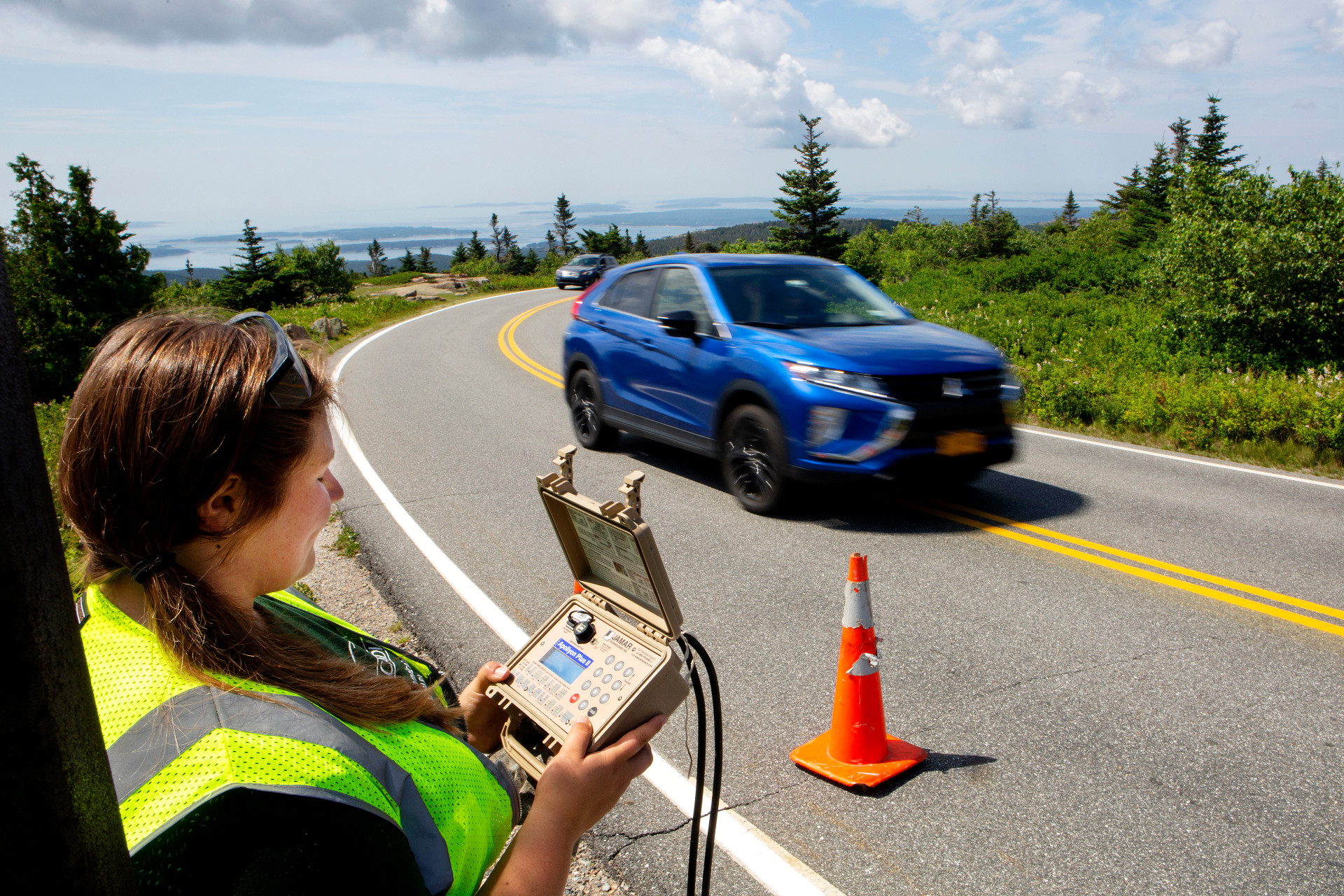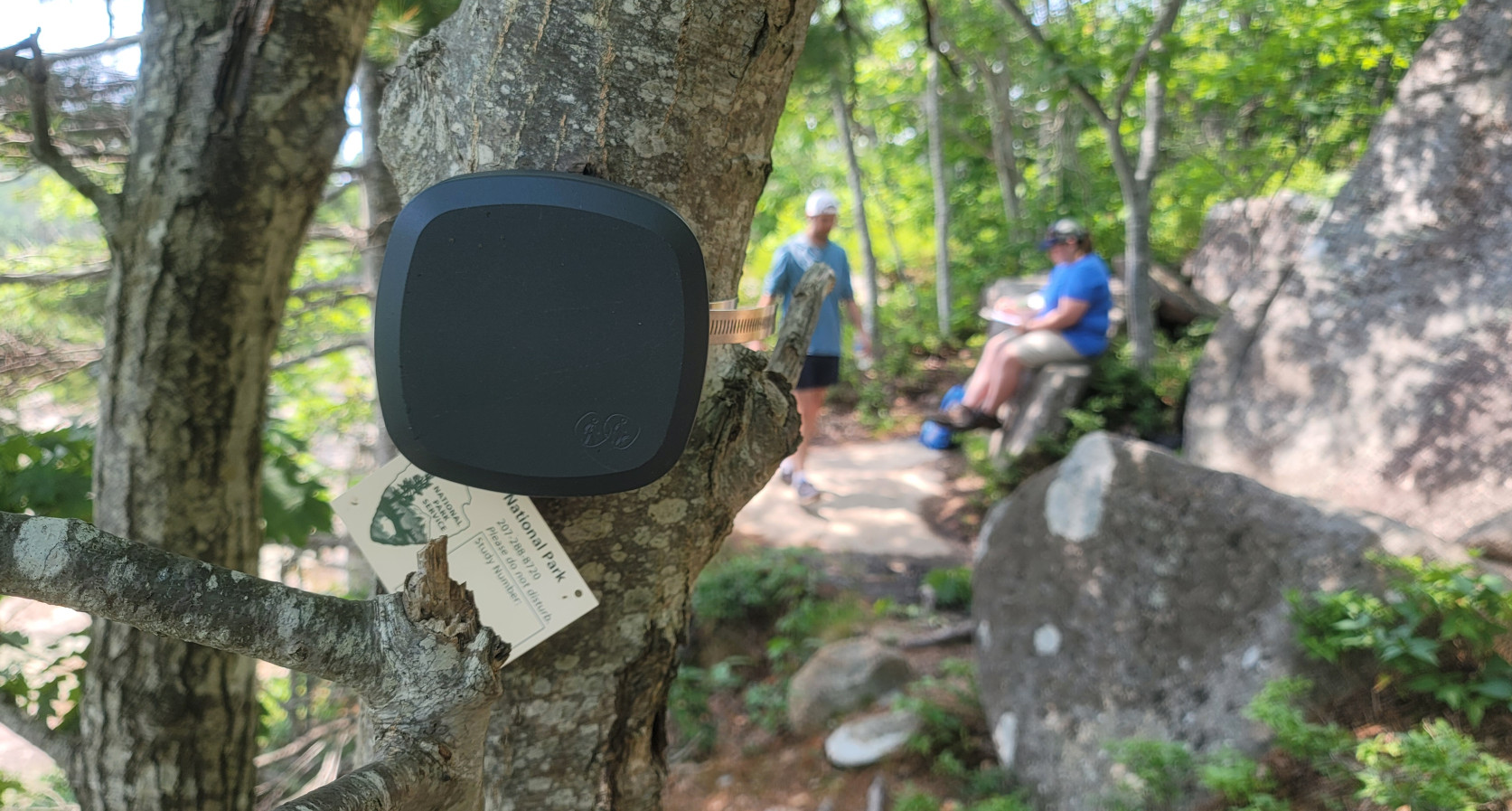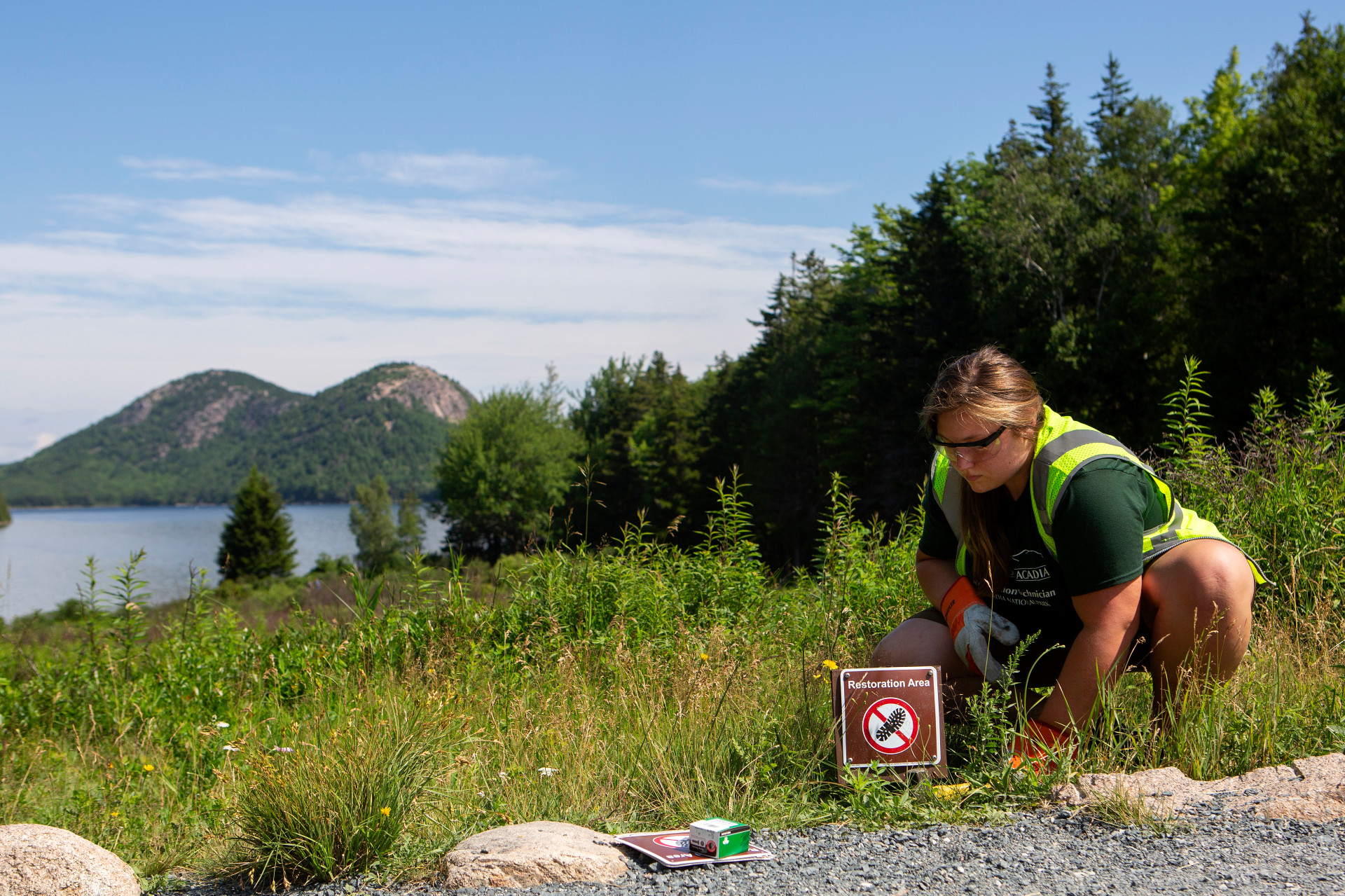Data Driven: Understanding Park Visitors
Friends of Acadia’s Recreation Technicians gather real-world insight into how and when visitors interact with the park, helping resource managers make decisions in Acadia.
August 17th, 2023
Friends of Acadia’s Recreation Technicians gather real-world insight into how and when visitors interact with the park, helping resource managers make decisions in Acadia.
August 17th, 2023
BY SHANNON BRYAN
Human behavior is relatively predictable.
We tend to buy the same dozen or so items from the grocery store every week, repeatedly wear that prized pair of pants, and fall asleep watching wildlife documentaries around the same time every night. But then along comes vacation, and people become wildly unpredictable.
That’s certainly the case for visitors to Acadia National Park, many of whom are on vacation—perhaps visiting Acadia for the first time—and out of their natural routine.
It’s the goal of Friends of Acadia’s Recreation Technicians to try and make sense of that less-predicable visitor behavior to help the park manage its resources—including natural resources, facilities, and staff.
“A big part of the work is tracking how people behave while they’re in the park – where they go, what they do when they get there—to better understand who they are,” said Becca Stanley, Friends of Acadia’s Recreation Technician Lead.
“We need to understand visitors better for personnel reasons and for resource management,” Stanley said. “For example, the number of law enforcement rangers working at any given time, that’s no accident.”
Stanley works year-round with Dr. Adam Gibson, Acadia National Park’s Social Science program manager. During the summers, she manages Friends of Acadia’s two seasonal Recreation Technicians (a.k.a. “rec techs”).
This summer, the Acadia Youth Conservation Corps got involved, too, joining forces every Thursday to monitor trails and participate in hiker counts.

Friends of Acadia Recreation Technician Lead Rebecca Stanley checks the Blue Hill Overlook traffic counter on Cadillac Mountain. (Photo by Ashley L. Conti/Friends of Acadia)
Much of their work is hard data collection—counting hikers on a trail, counting bicycles on a park road, tracking the length of time cars remain parked at a particular lot.
Sometimes it’ll include more subjective information, like the timed-entry reservation survey Becca Stanley conducted on the Cadillac Reservation System, which asked park visitors to share their personal experiences using the online system.
The data that Recreation Technicians gather provides real-world insight into how and when visitors interact with the park, which is crucial to resource managers as they make decisions on where to allocate resources, what to prioritize, and what trickle-down impacts should be planned for.
It also means resources managers aren’t relying on anecdotal observations, which don’t always tell the correct or whole story.
“The beauty of hard data is it’s collected 24/7,” Stanley said. “It’s hard patterns you can fall back on.”
To assist in their data-gathering efforts, Rec Techs employ a number of tools.
Chief among them are the 30 digital counters installed in locations around the park, which use sensors to count automobile traffic, bicycle traffic, and/or foot traffic at that specific spot.
Occasionally those counters move to gather information at a new location, but the data is most valuable when it tracks over time, ideally over years, in the same place. That long-term data enables staff to identify changes and trends.
For example: Is automobile congestion in the Jordan Pond parking lots beginning earlier in the day than in years past? Are there more cyclists riding up the Cadillac Mountain Road? How many people are snowshoeing or cross-country skiing on the carriage roads in winter?
In high-use areas where yearly increases in visitation hinder not just the visitor experience but also visitor safety—such as the Cadillac Summit Road, which was often so backed up with vehicle traffic that emergency vehicles could not reach the summit when needed—that data helps park managers decide where change is critical and what form that change might take.
When considering reservation systems, data collection also includes other relevant information, like the turn-over rate of parked cars, when people are coming, how long they’re staying, and how full the lot is at any given time.

Friends of Acadia Recreation Technician Becca Stanley checks a time-lapse camera that monitored how long cars stay at the summit of Cadillac Mountain in 2019. (Photo by Ashley L. Conti/Friends of Acadia)
Counters are used to count hikers on trails, too. These counters are mounted to trail-side trees and count every time a person passes by. They’re a convenient and low-impact way of counting passersby at a specific location, and they can track day and night. Stanley and her team routinely download and review that data to assess ongoing trends or make note of spikes.
Of course, those sensors don’t distinguish between a passing hiker or a passing deer—and trackers of any variety are susceptible to errant information—so the Recreation Technicians additionally do in-person validating at all locations.
A Rec Tech will tuck themselves into a low-key spot on the trail and count every hiker who passes during a specific time—say, from 11 a.m. to noon—and then compare their count to the tracker’s during the same time range. If the numbers align, great. If not, further investigation is needed.

Recreation Technician Lead Becca Stanley counts hikers on the Beehive Trail. The count will validate the numbers from the mounted trail counter nearby. (Photo by Shannon Bryan/Friends of Acadia)
“Trail counters are primarily used to understand patterns throughout the day,” said Stanley. “Where are visitors going, what are they doing? How many people are there? Are more or fewer people going to this mountain?”
During Covid, for example, as social distancing prompted hikers to seek out places where they’d be less likely to see many other people, those trail counters showed increases on trails that had historically been relatively quiet.
“Low-use mountains were getting more use,” said Stanley. “Everyone had the same idea to go to low-use trails—and that was interesting.”
They’ll sometimes put trail counters on closed trails, too, like Jordan Cliffs, Precipice, and Valley Cove, which close in the spring to protect peregrine falcons, which nest and raise young on the cliffs in those areas.
“We put counters out to see how many people are illegally going into that area,” Stanley said. It’s largely a safety concern for visitors, she added, as the falcons can be territorial during the breeding season. “This information helps decide whether or not to station a ranger in the area.”
In cases where trails need to be closed for other reasons—such as trail building or maintenance—the Recreation Technicians will gather traffic counts for nearby trails.
“If the park needs to close a trail, they need to displace those hikers somewhere else,” said Stanley. “Other trails will get used more than normal, which means the trails crew is going to have to come out more. It has a downstream effect in that way.”

From left: Adam Gibson, Acadia National Park’s Social Science program manager, Becca Stanley, Friends of Acadia’s Recreation Technician Lead, and Laurel Shanks, 2023 Recreation Technician, plan their routes before a day of hiker counts on Champlain Mountain. (Photo by Shannon Bryan/Friends of Acadia)
Those counters also help confirm or dispel anecdotal observations. Stanley noted that happened over the last few years as more visitors came into the park with E-bikes.
“A lot of people were telling us there were a lot more bikes on Cadillac,” Stanley said. “Where we’d had a consistent number of bikes on Cadillac Mountain, a predictable number, when E-bikes came into popularity, we saw huge spikes in bicycle counts on the Cadillac Summit Road.”
In that case, “anecdotal observations matched the data,” she added, “Which was a surprise to us at the time.”
The Rec Techs also use portable traffic counters—recognizable as a pair of parallel tubes stretched across the road—which count automobiles and track speed.
While Recreation Technicians spend much of their time gathering data about visitor behavior, they’re also involved in helping to shape it.
There are places in the park where visitors might need a nudge to know what to do—or not to do. The trail split on the way up Beehive is a prime example. There’s a sign at that intersection that encourages visitors to take a minute to assess the options and their ability level and choose the route that’s best for them. The goal is to help visitors avoid ending up on a trail they’re not prepared for—Beehive’s ledges and ladders can be a challenge for some.
Other signs are placed at locations where illegal rock stacking often takes place or where fragile vegetation needs to be protected from off-trail foot traffic.

Friends of Acadia Recreation Technician Lead Becca Stanley straightens up a restoration area sign near Jordan Pond. (Photo by Ashley L. Conti/Friends of Acadia)
“We try to get people at the point of decision,” Stanley said. Signs go right at the spot where visitors are making a choice. The Rec Techs also assist the park with identifying language and placement that is most effective by testing out different signs and locations.
“We want to make it easy, kind of nudge visitors to make the right decision,” said Stanley.
And while visitor behavior may always be somewhat unpredictable, the work of Friends of Acadia’s Recreation Technicians helps park resource managers ensure their adventures in the park are memorable and safe, and the park’s resources remain welcoming and vibrant for decades to come.